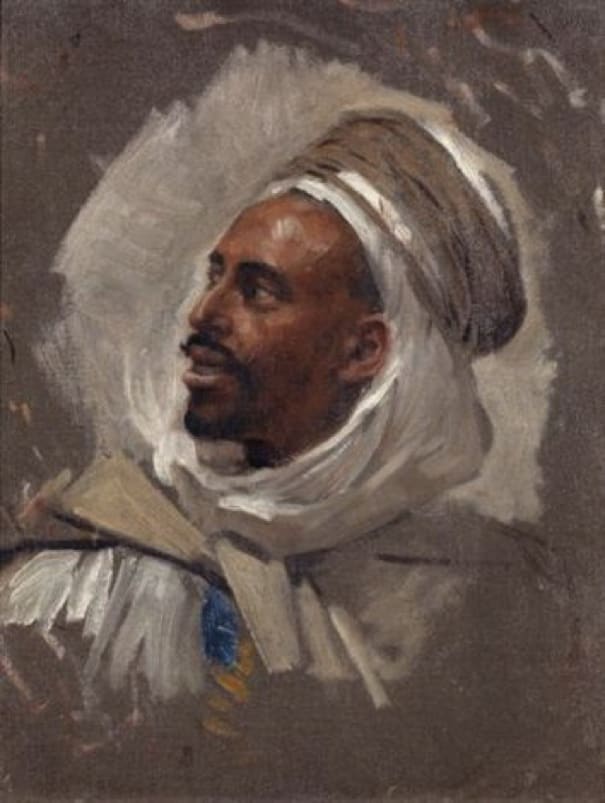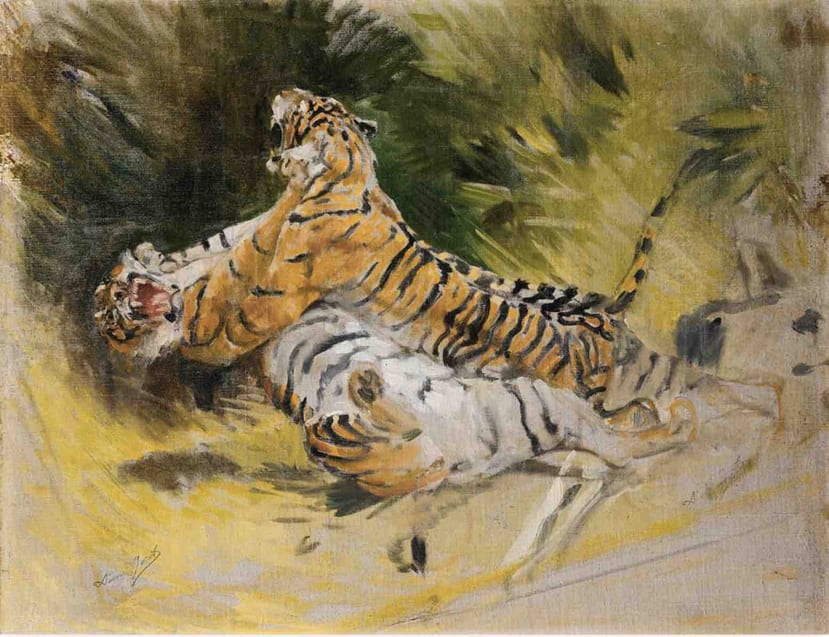Aimé Morot (1850 - 1913)
Further images
Portrait of an Indian boy
Signed lower right: Aimé Morot
Oil on canvas
31 x 25 cm. (12 ¼ x 9 ¾ in.)
Portrait of an Indian boy
Signed lower right: Aimé Morot
Oil on canvas
31 x 25 cm. (12 ¼ x 9 ¾ in.)
This direct and striking oil sketch of a young boy was painted by Aimé Morot in India in 1893. Not connected to any known work, it therefore appears to be an autonomous study, painted for no other reason than the pleasure in swiftly capturing the appealing likeness of a young boy with a vibrant pink turban. In this respect, and in the way that Morot skilfully creates the volumes with a few deft brushstrokes, it compares well, for example, with a head study painted in North Africa a few years previously (fig. 1). In both, the juxtaposition of finished areas with more spontaneous passages paradoxically gives the sitters a greater vivacity than would be the case in a more polished image.

Fig. 1, Aimé Morot, Head study of a North African, oil on
canvas, 36 x 29 cm, Private Collection
Morot’s duel interests in travel and hunting took him across much of French Africa and the Near East. His voyage to India was catalysed by tiger hunting, and indeed he did not appear to do much painting whilst on the Subcontinent, since there are very few works connected with this trip. A sketch of two tigers fighting (fig. 2), painted on a very similar canvas to the young boy, is, as it stands, the only other known work from this period.

Fig. 1, Aimé Morot, Tigers fighting, oil on canvas, 45 x 60 cm,
Private Collection
Born in Nancy to a Republican family, Morot had moved to Paris by the late 1860s to study under Alexandre Cabanel at the École des Beaux-Arts but left after a few weeks, preferring to learn independently. Incredibly, and testifying to his rare talents, Morot was awarded the Prix de Rome in 1873 at his first attempt and won a gold medal at the Salon of 1879. He married the daughter of Jean-Léon Gérôme and was evidently close to his illustrious father-in-law, sometimes collaborating with him on a single canvas. Though now less well-known than his contemporary William-Adolphe Bouguereau, with whom he taught at the Academie Julien in the 1880s, in his own day Morot was every bit as respected, winding down his career with a professorship at the École de Beaux-Arts and a gold medal at the Exposition Universelle of 1900.







